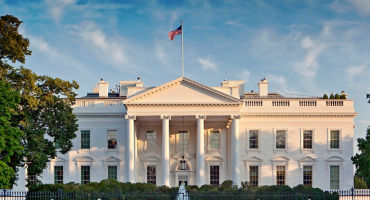Seven observations related to this EO
1. The EO is narrow and, in principle at least, heavily geared toward national security
These new restrictions target only three sectors — semiconductors, AI, and quantum technology — that represent national security concerns. They do not cover US portfolio investments in Chinese equity and bonds markets, at least for now. It’s also worth noting that this EO doesn’t include biotech, a strategic industry with significant national security implications.
China hawks, including several US presidential hopefuls, have already criticized the Biden administration’s EO as a “half measure” that insufficiently protects US national security. US domestic politics will continue to drive US/China policy direction. According to Pew Research, 83% of Americans have an “unfavorable view” of China, which means that there will almost certainly continue to be political incentives for a more hawkish approach toward China as we head into the 2024 US presidential election season. Beyond the US, there could be knock-on policy effects in key countries in Europe and the Indo-Pacific.
2. China will likely respond, though its immediate options are limited
While the Biden administration’s EO didn’t necessarily come as a surprise, it demands some kind of response from China given the country’s own politics. However, Beijing’s options are limited and risk broader policy blowback. As such, I don’t expect China to escalate the situation rapidly.
For its part, the US will continue to communicate — both privately and publicly — that this EO is narrow. The US will reiterate that these restrictions focus on national security, not the broader economic relationship between the US and China. In my view, Beijing may doubt these claims and US investors may benefit from some skepticism as well.
3. This isn’t the end of the “reverse-Committee on Foreign Investment in the United States” issue
This EO will not be implemented until 2024, so it may evolve between now and then. I expect more intense lobbying from tech and other firms during this period.
China hawks in the US will likely be working overtime through the rest of this year to expand the definition of “strategic” amid ongoing tension between the US and China. At the same time, the Biden administration will probably work with allies to broaden the EO beyond the US — with likely mixed results, in my view.
4. Decoupling strategic sectors should prove disruptive
Combined with last year’s CHIPS Act, which boosted federal funding for domestic semiconductor production, research, and development, implemented stringent export controls on advanced semiconductors, and addressed other Trump- and Biden-era policies, the EO serves as evidence that US policymakers are serious about decoupling from China along strategic sectors.
This process is likely to be messy and disruptive. We may be facing an inflection point in policymaker rationale toward globalization. The long-term implications are many and profound. For example, going forward, we may see a policy preference for national security, rather than economic efficiency.
For decades, US foreign policy was designed to integrate countries into the US-led global economic system in an attempt to promote geopolitical stability and enhance US economic and security interests. Today, it’s clear that this approach has gone the way of the dodo. In light of this shift, prudent investors may do well to prepare for increased supply chain disruption, structurally higher inflation, more differentiated cycles, and ongoing policy disruptions.
5. Any “thaw” between the US and China is likely temporary
This EO makes the recent US/China “détente” harder to manage. Nonetheless, I believe that both sides wish to handle their relationship professionally. US Treasury Secretary Janet Yellen and US Secretary of State Anthony Blinken’s visit to Beijing earlier this year, US Special Presidential Envoy for Climate John Kerry’s attempts to restart climate talks with China, and the probable meeting between the presidents of the US and China later this year all speak to this.
However, the bottom line is that there is a push and pull between the US and China in the competition for global power. Policy ripple effects are likely to spread well beyond Washington, DC and Beijing, to Brussels, Tokyo, Canberra, and Seoul, to name a few places. Longer-term, structural changes in the geopolitical environment point to accelerating tensions and an ongoing shift toward greater global geopolitical instability.
6. Geopolitical and macro risks will likely remain elevated
This is especially true of areas of geopolitical/national security where the US and China hold different geostrategic aims. A military accident that spirals out of control is the chief security concern in DC and beyond. Whether such a conflict will come to pass remains to be seen, but, regardless, the geopolitical backdrop is volatile is far as the US/China relationship is concerned.
7. Investors, take note of a “new normal” in national security
This latest set of restrictions surrounding investing in China is a good reminder that we’re operating in a new environment. It’s my view that ongoing disruption in the geopolitical landscape will produce highly differentiated outcomes at the regional, country, asset class, and company levels for years to come.
The upside of this is that investors may be able to find alpha opportunities along the way as winners and losers emerge. Given the range of possible outcomes and the degree of divergence that could exist at all these levels, we may be entering an investment era that favors actively managed strategies that are able to flex and adapt more nimbly than passive peers.











Financial Market Review
Continue readingBy
Brett Hinds
Jameson Dunn